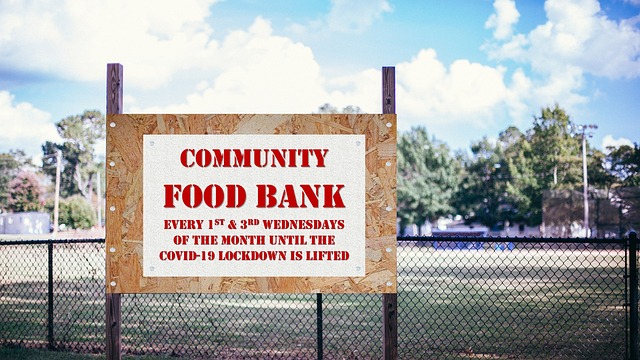
As the Federal Reserve has halted the rate hikes in recent months, investors have been left wondering what will happen next. Whether they will be able to move money into equities, and whether inflation will increase to a more sustainable level. In the meantime, gold and silver may be able to ride the ‘hot air’ created by the Fed’s actions.
Inflation forecasts are slightly higher than thought
While inflation forecasts are somewhat higher than expected, they still are below the central bank’s target for a two-percent growth rate over the forecast period. Despite the increased forecasts, there is still plenty of uncertainty.
A number of factors are expected to contribute to inflation over the next year. In particular, labour costs are forecast to continue to rise. Capacity constraints are also expected to add to the upward pressure on prices. These include the war in Ukraine, pandemic-related supply chain disruptions, and increased input costs.
Energy prices are estimated to add significant inflationary pressures. Retail energy prices are projected to rise 20 to 30 percent over the next couple of years. This will help keep underlying inflation above the forecast level. However, it is expected that prices will ease later in the forecast period.
Inflation is much too high in the equities market
If you’re looking for a good way to beat inflation, investing in equities may be your best option. The S&P 500 Index, for example, returned more than 7.9% annually in February.
However, the value of such returns is much smaller when inflation increases. The chart below shows the effect of inflation on purchasing power.
As prices rise, consumers feel the pinch. They’re less likely to hold cash, causing credit to become more expensive. In turn, they may cut back on discretionary spending and invest less. This can cause a recession.
One way to mitigate the effects of increased inflation is to find an inflation hedge. This can be done in a variety of ways. For example, a potential inflation hedge is a diversified portfolio of bonds, real estate, stocks, and cash. It can also be done by investing in commodities.
Investors left unsure of what the central bank will do next
The Federal Reserve hiked benchmark interest rates in March. Investors were hopeful that this move would slow inflation. In fact, it seems likely that the Fed will continue to hike rates, but may slow the pace of the rise early in the year.
This is not the first time the Fed has stepped in to support markets during a market downturn. After the Great Financial Crisis of 2008, Fed Chair Ben Bernanke implemented the first round of quantitative easing, or QE.
During this period, low borrowing costs encouraged consumer spending. However, that was overshadowed by elevated inflation.
Inflation rates remain persistently high. As such, the Fed has shifted its approach toward more aggressive monetary policy.
Several countries have stepped back from rate hikes, including Australia and Norway. Meanwhile, Japan has yet to undergo a rate hike.
Investors react to the Fed’s decision to stop rate hikes
The Fed’s decision to suspend rate hikes is being met with a range of reactions. Whether the move is a good idea or bad, it will impact the economy in the short term. But what will be the long-term impact?
Analysts are speculating whether the Fed’s decision will slow the overheated economy or cause another recession. It is also possible that the Fed’s actions will tamp down inflation without adversely affecting the economy.
The Fed has raised the fed funds rate since December 2007, when the economy was in the midst of the worst economic downturn in nearly four decades. In June, inflation reached 9.1 percent. While a significant decline in inflation has occurred, the economy still faces concerns about surging consumer prices.
Sprott Physical Gold Trust PHYS is a top risk-adjusted choice to potentially double any large gold gain soon
If you’re looking for an investment that offers the ability to invest in physical gold, the Sprott Physical Gold Trust (PHYS) may be a good choice. However, before you decide to invest in this type of fund, you should consider its tax benefits. The tax treatment is different from other types of ETFs, so it’s important to understand what your options are.
Unlike other top gold investment companies, PHYS does not require you to store physical gold in a vault. You can buy and sell units on any open trading day. Also, unit holders are eligible for redemption for physical metal on a monthly basis.
PHYS units are currently traded at a discount to the NAV, which is a sign of bearish sentiment. In order to redeem your units, you must meet a minimum redemption amount. This redemption value is based on a full-sized London Good Delivery bar, which is 400 ounces.

If you are interested in helping out people in your community, you may want to learn about some of the biggest charity groups in Ohio. There are many, including the United Way, American Children’s Charity Task Force, the Kiwanis Club, and Foodbanks. These organizations all work hard to support those in need.
United Way
The United Way is one of the largest charity groups in the nation. Since 1958, this organization has been an essential community partner, helping to meet the needs of people in need.
United Way is a local organization, and its volunteers and staff live in the neighborhoods they serve. This enables the nonprofit organization to maximize the charitable dollars it raises.
It is one of the best ways to help those in need in the upper Ohio Valley. It supports communities in Monroe County in Ohio and Tyler County and Marshall County in West Virginia.
In the early 1900s, women and clergy in Denver, Colorado recognized a need for cooperative action. They formed a nonprofit organization that coordinated services and fund-raising campaigns for 22 agencies.
American Children’s Charity Task Force
One of the tastier groups to be found at the Cleveland Clinic is the American Children’s Charity Task Force. It has been around for quite some time and is a worthy addition to the health care providers roster. The organization has a slew of accolades to its name including the accolades of best charity, best hospital, and top child-care program among others. Among the more than 450 employees, the group boasts a well-balanced mix of adolescent and adolescent males and adolescent females. Not to mention the requisite perks such as health insurance, employee discounts, and employee recognition programs. In short, it’s one of the nicest places to work and play.
Kiwanis Club
Kiwanis is an international service organization headquartered in Detroit, Michigan, founded in 1915. Its purpose is to provide services to improve the lives of children and adults. The organization operates clubs for adults, youth, and families.
In recent years, Kiwanis has adopted a new motto. Its focus is on ‘Changing the World One Child at a Time’.
Kiwanis Clubs around the world have been helping kids by donating toys and other goods, distributing them to underprivileged families, and offering a range of clubs for young people. These clubs help kids through school programs, community projects, and volunteer opportunities.
Some of the local Kiwanis clubs offer scholarships. Welsh Hills School and C-TEC also offer scholarships.
American Red Cross
The American Red Cross is a major charity group in the United States. It provides emergency assistance in the aftermath of natural disasters. In addition, it coordinates federal efforts to respond to natural disasters.
During Hurricane Katrina, the Red Cross raised $2.1 billion for Katrina relief, which was a large sum for a nonprofit. However, the charity had some stumbling blocks.
One of the more notable donations was the Clinton-Bush Katrina Relief Fund, which raised a substantial amount of money. Despite the significant funds raised by the charitable group, the organization still faces questions over its management.
Another example is the National VOAD, which coordinated daily conference calls with the American Red Cross and other national disaster relief organizations. These calls helped to identify regions most in need of charitable services and to coordinate supplies.
Foodbanks
Food banks are a staple of the state’s charity scene, helping people in need through the good, the bad and the downright ugly. There are over 3600 hunger relief organizations in the state, and while some of them are small, others are massive, relying on charitable dollars to buy food in bulk.
A food bank’s most important task is feeding the hungry. They provide the infrastructure and food to hundreds of food pantries across the state, but also work with dozens of partner organizations to assist the most needy. These include nonprofits, government agencies, and churches. In addition to distributing free food, they can help low income families find work, and even refer people to other programs.
Private foundations
A private foundation is a charitable organization established for a particular purpose. The organization may be operated by family members, or it may be run by a board of directors. Regardless of the type of structure, the foundation is usually a tax-exempt, nonprofit entity.
Private foundations are independent legal entities, funded by individuals or by a corporation. They are usually governed by a board of directors or by a group of trustees.
There are many advantages to operating a private foundation. Not only do donors enjoy significant tax benefits, but they also have full control over the assets donated to the foundation. This allows them to make gifts to charities that are important to them.

A quick look at the statistics for the state of Ohio shows that the population has declined by 0.69% in the past two years. In addition, there is a slight increase in uninsured citizens in the state, as well as a decrease in the number of employed people. Another notable change in Ohio’s population is that the number of households that speak Spanish has increased to 21% of the total population.
Spanish is the most common non-English language spoken in households in Ohio
In 2019, 2.8 million non-Hispanic Americans speak Spanish at home. That makes it the most common non-English language in households. But the number of people speaking it at home doesn’t fully capture how many use it in their everyday lives. The United States is the second largest Spanish-speaking nation in the world.
Non-Hispanics also speak other languages at home. About one in three Americans (33%) speaks Swahili, while Mandarin is the language of the world’s richest individuals. Asian and Pacific Island languages, including Cambodian, Laotian, and Vietnamese, are also a popular choice among non-Hispanics.
Uninsured citizens in Ohio grew by 0.69% from 6.12% to 6.6%
The number of uninsured citizens in Ohio grew by 0.69% from 6.12% to 6.6% in 2019, marking the third year in a row that the rate has increased. Uninsured rates in 13 states grew, and nine states had increases in nonelderly uninsured individuals. In most states, the increase was driven by Medicaid expansion, but there were some exceptions.
The uninsured rate was lower in 2010 when the first provisions of the Affordable Care Act went into effect. However, as the economy recovered, the number of nonelderly uninsured increased.
Most partisan county in Ohio was Holmes County, OH
One of the most partisan counties in the state was Holmes County, OH. A small county located in the Ohio Amish Country, Holmes County has long been the domain of the Democrats. The county was a stronghold of the party from 1856 until 1940. But a recent study reveals that the Democrats are about to lose the seat in their own backyard.
Holmes County has the largest Amish community in the state. In the mid-1800s, every Democratic presidential candidate carried the county. Since then, the Republicans have reaped the benefits of the county’s voting power.
Public use microdata areas (PUMAs) in Ohio
Public Use Microdata Areas are a type of non-overlapping statistical geographic area. These areas are generally designed to cover the entire United States or a portion of it. They are defined as geographical regions with no fewer than 100,000 people. This means that these areas provide the most comprehensive wall-to-wall geography in the U.S.
The Census Bureau defines PUMAs for tabulation of the decennial census. In addition, they also allow for more detailed research and statistics. To that end, the Census Bureau’s Current Population Survey (CPS) is a source of official statistics on the economy and labor market.
Employment decline from 5.36M employees to 5.36M employees
A cursory glance at the Ohio census revealed a 5.36M workforce compared to the 5.2M in 2007. For the first time since the Great Depression, the state has a population below one million people and more are moving in than out. With a flurry of emigres chasing a job here and there, it is a safe bet the state’s labor force will keep pace with the rest of the country. Fortunately, the state boasts an impressive array of industries and a sizable work force, most notably the retail, hospitality and telecommunications sectors.
Demographic data is gathered from the 2020 American Community Survey
The US Census Bureau gathers demographic data from the American Community Survey (ACS). ACS is a monthly survey of households that provides comprehensive labor force, employment, and earnings data. These data are used to provide information about population size, housing costs, and other socioeconomic characteristics for use in government and business activities.
ACS data products are based on information from the most recent decennial census. This is the only complete, accurate count of the total population in the U.S. It is also the foundation of representational government. ACS results inform the redistricting process and public health, and help shape transportation decisions.
Property taxes in Ohio
Property taxes in Ohio vary based on location and the value of your property. The state’s real estate tax rate is lower than other Midwestern states, but it can be higher than the national average.
Property taxes are a source of revenue for local governments. They are calculated based on the assessed value of a home. These rates can change over time. It is best to check with your county and city government to find out what you are paying.
Depending on the county, the assessed value may be less than the actual market value. If you suspect the value is inaccurate, you can request a reassessment.

Several indicators are currently suggesting that the global economy is deteriorating. For instance, Russia’s invasion of Ukraine, food shortages, and a faster tightening of US monetary policy have all weakened the growth outlook.
Russia’s invasion of Ukraine has deteriorated the growth outlook
Russia’s invasion of Ukraine has dramatically changed the economic outlook for Europe and the world. The war has weakened the prospects of post-pandemic recovery and is causing high inflation. It also aggravates the energy shock, which is already weighing on global confidence.
Russian President Vladimir Putin’s decision to start a war in the former Soviet Union has caused a sharp drop in growth expectations. According to the International Monetary Fund, the global economy will grow at a slow pace in the coming years. Growth forecasts for the United States, China, and the majority of developed economies have fallen.
Meanwhile, growth projections for many developing countries have slipped. Growth forecasts have declined by 0.4 percentage points in the next two years, and by an additional 0.9 percentage points in 2023. During the same period, the Organization for Economic Cooperation and Development expects the economy of the Russian Federation to contract by 5.6 percent.
Russia’s war against Ukraine has roiled the global energy markets. Energy prices have risen significantly, reflecting deep uncertainties over the future of fossil fuel supplies.
Food shortages have caused serious setbacks to development gains
Food shortages have been a serious setback for development gains in the past two decades. Despite the United Nations Sustainable Development Goals, global progress against hunger has largely stagnated.
In addition to global food prices, food systems have been compromised by other factors, such as climate change, war and political conflict. These conditions are driving millions to the brink of starvation. The UN Office for Coordination of Humanitarian Affairs estimates that in 2022, more than 250 million people will be missing the caloric requirements of their daily diet.
In the face of these challenges, it is imperative that food systems be managed more effectively. This means avoiding further disruptions and strengthening supply and demand management.
Climate change and other environmental factors are playing a significant role in driving more extreme events, such as droughts and floods. These occurrences are further intensifying hunger in areas that rely on sensitive agricultural systems.
Historically, disruptions to food and commodity markets have led to increased inflation and malnutrition. In some cases, they also resulted in violent political conflicts.
A faster tightening of US monetary policy could lead to sudden increases in borrowing costs, currency pressures, and capital outflows
As the Fed hikes its policy rate, it is important to consider how this could affect the world’s financial markets. The economy may be impacted by higher borrowing costs, increased currency pressures, and capital outflows. Developing countries have a particular vulnerability to these trends.
A rapid tightening of monetary policy in the United States is likely to be followed by a similar surge in borrowing costs, currency pressures, and capital outflows in developing nations. This would have adverse consequences for many of the world’s poorest countries.
In order to reduce the risks of a sudden spike in inflation, the Fed may need to increase interest rates to a more moderate level. However, this is not a guarantee. There are downside risks to such a move, including a potential for a global recession.
The relationship between contractionary monetary policy and negative economic spillovers is both systematic and long-term. It has been shown to be a “second round effect”, with the effects of a 100 basis point rise in the Federal Funds rate translating to a 0.8 percent fall in output in developing countries.
Welcome to WordPress. This is your first post. Edit or delete it, then start writing!



